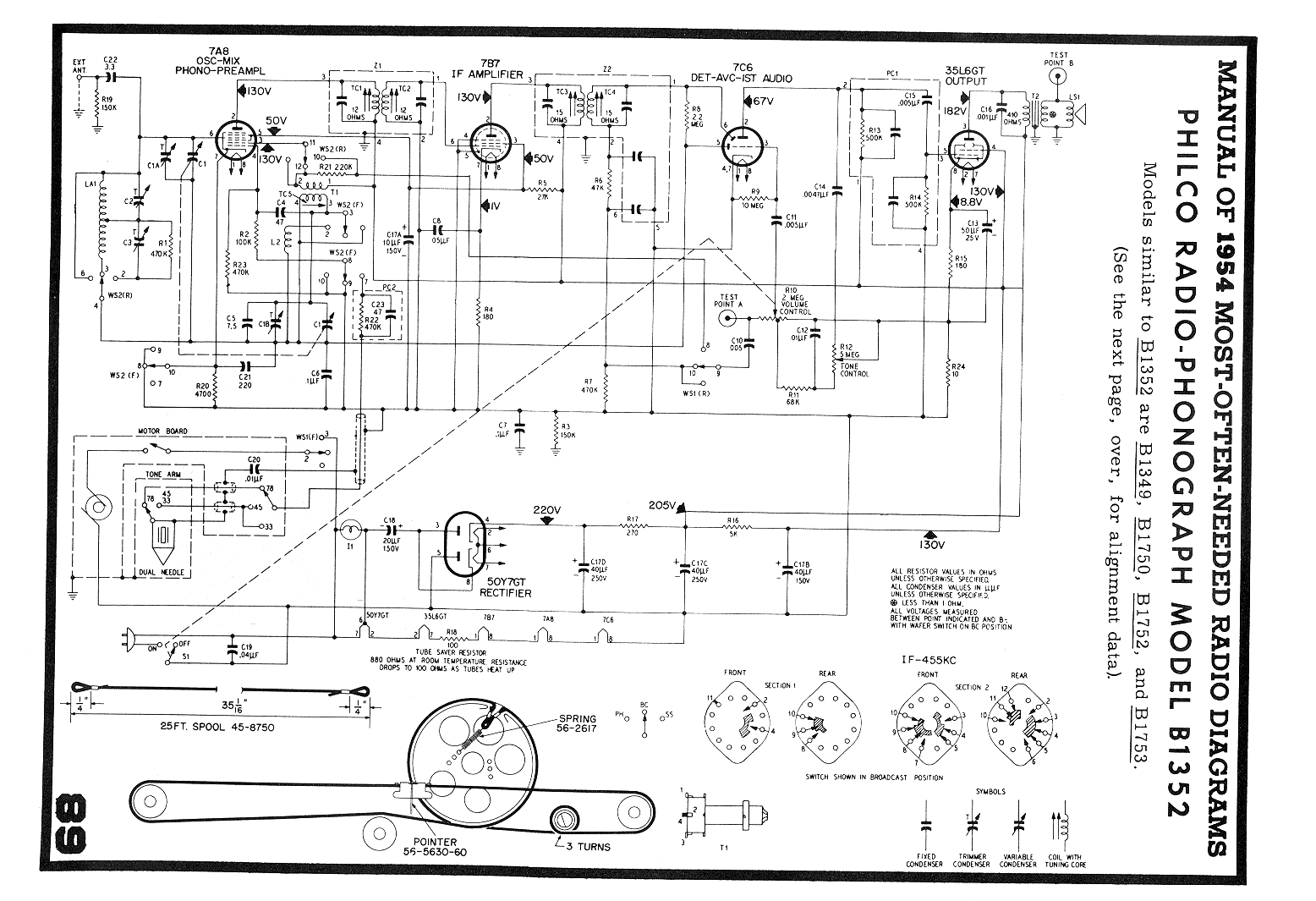Posts: 122
Threads: 37
Joined: Jul 2012
City: Coral Springs, FL
11/7/14 I am restringing the dial cord on my B1750 radio. It's rather simple and straight forward EXCEPT for the final attachment back to the spring. The cord starts and ends on the same little spring. I have no problem routing the cord through all the pulleys correctly, while keeping the cord tight. However, if the length of the cord is - like 2 mm too long, then when I attach the end of the cord back to the spring, it has slack. If I make it 1 or 2mm shorter, then it won't reach the spring and if I pull the spring down so it can reach, the there is slack on the initial segment of the cord where it first attached to the spring. Should I just keep the whole thing alittle loose, run the cord through the pulleys, attach both ends to the spring and then pull the spring up to a higher up hole in the dial wheel, thereby forcing tension on the initial and last segment of the cord? I thought this was going be easy - but ran into this dilemma. Thanks.

(This post was last modified: 11-07-2014, 05:48 PM by
ODPILOT.)
Posts: 411
Threads: 42
Joined: Sep 2008
City: Ironton Ohio
Seems like the spring would make up for a few mm either way. After you string it do you manually run it back and forth to evenly distribute the tension?
Posts: 347
Threads: 34
Joined: May 2007
City: Raleigh, NC
I had the same problem on a 40-190 recently. One segment was tight, the other loose. I worked the tuning knob back and forth a few times, and the tension evened out, as tab10672 suggested.
The next day, though, the string had stretched a little, so it was too loose again, and the cord slipped. I took one end off and shortened it a little, put it back on, worked the tuner back and forth a time or two, and it all works fine now.
John Honeycutt
Posts: 122
Threads: 37
Joined: Jul 2012
City: Coral Springs, FL
Good suggestions. No I didn't try tuning it back and forth to even out the tension but I will try it. I think also that in the process of stringing it and keeping tension on it as I do it, the string does stretch. I think also perhaps, it's a mistake to set the length of the cord by looping both ends permently before I string it. I think maybe I should leave the end unlooped and then wrap on the spring hook and THEN make a knot. Thanks, will try again.




![[-] [-]](https://philcoradio.com/phorum/images/bootbb/collapse.png)


